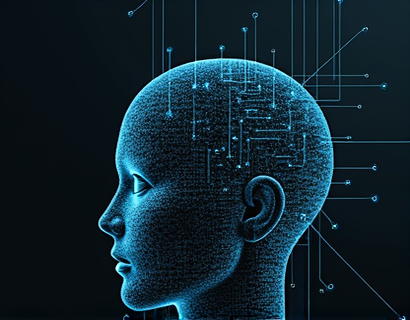Transforming Healthcare Communication: The Power of AI-Driven Chat Interfaces in Intensive Care Units
The integration of artificial intelligence in healthcare, particularly within Intensive Care Units (ICUs), represents a significant leap forward in patient care and decision-making. An AI-driven chat interface is revolutionizing access to comprehensive ICU knowledge, offering real-time insights and enhancing communication among patients, caregivers, and healthcare professionals. This technology ensures that all parties involved have instant access to critical information, thereby supporting informed decision-making and improving outcomes in critical care settings.
Enhancing Patient and Caregiver Communication
The primary goal of implementing an AI-driven chat interface in ICUs is to bridge the information gap that often exists between healthcare providers and those they serve. For patients and their caregivers, understanding the complexities of ICU services and treatments can be overwhelming. This technology simplifies that process by providing clear, concise, and up-to-date information. Users can ask specific questions about their condition, treatment options, and potential outcomes, receiving answers that are both accurate and easy to understand.
Moreover, the chat interface serves as a continuous support system. Patients and caregivers can access information at any time, reducing anxiety and fostering a sense of control over their healthcare journey. This constant availability of information helps in building trust between patients and the healthcare team, which is crucial for effective care.
Empowering Healthcare Professionals
For healthcare professionals, particularly ICU staff, the AI chat interface is an invaluable tool. It provides instant access to a wealth of knowledge, including the latest research, clinical guidelines, and best practices. This immediate access to comprehensive data enables staff to make more informed decisions quickly, which is essential in the fast-paced environment of an ICU.
Additionally, the chat interface can assist in case reviews and second opinions, allowing multiple specialists to contribute their expertise in real-time. This collaborative approach enhances the quality of care and ensures that patients receive the most appropriate treatment based on the latest evidence and expert consensus.
Real-Time Insights and Decision Support
One of the most significant advantages of an AI-driven chat interface is its ability to provide real-time insights. In an ICU, every minute counts, and timely information can be the difference between life and death. The chat system can offer up-to-the-minute updates on patient conditions, treatment efficacy, and emerging health trends. This immediacy is crucial for monitoring patient progress and adjusting treatment plans as needed.
Furthermore, the chat interface can integrate with various data sources, such as electronic health records, lab results, and medical imaging, to provide a holistic view of the patient's status. This comprehensive data integration allows healthcare providers to make more accurate assessments and decisions, reducing the risk of errors and improving patient outcomes.
Enhancing Educational Resources for Healthcare Teams
The AI chat interface also serves as an educational tool for healthcare teams. New staff members, especially those transitioning from other specialties, can benefit from the instant access to detailed information about ICU protocols and procedures. The chat system can provide step-by-step guides, common scenario simulations, and best practice recommendations, facilitating a smoother onboarding process and continuous learning.
For experienced staff, the chat interface can offer advanced training modules and updates on new technologies and treatment methods. This ongoing education ensures that the healthcare team remains at the forefront of medical innovation, enhancing the overall quality of care provided to patients.
Improving Operational Efficiency
Beyond patient care, the AI-driven chat interface contributes to operational efficiency within ICUs. Staff can use the chat to quickly access administrative information, such as scheduling, resource allocation, and policy updates. This streamlined access reduces the time spent on administrative tasks, allowing healthcare professionals to focus more on patient care.
Additionally, the chat system can help in managing patient flow and resource utilization by providing real-time data on bed availability, staffing levels, and equipment status. This information enables better planning and resource management, reducing wait times and optimizing the use of available resources.
Ensuring Data Security and Privacy
In the realm of healthcare, data security and patient privacy are paramount. The AI chat interface is designed with robust security measures to protect sensitive information. Encryption protocols, secure authentication methods, and compliance with regulations such as HIPAA ensure that patient data remains confidential and secure. Users can interact with the chat system with confidence, knowing that their information is safeguarded.
Regular audits and updates to security measures are conducted to stay ahead of potential threats, ensuring that the chat interface remains a trusted and reliable tool for healthcare professionals and patients alike.
Future Prospects and Innovations
The potential for AI-driven chat interfaces in healthcare is vast, with ongoing advancements promising even greater benefits. Future developments may include more sophisticated natural language processing capabilities, allowing for more nuanced and context-aware interactions. This could further enhance the user experience, making the chat system even more intuitive and helpful.
Integration with wearable devices and remote monitoring technologies could also expand the scope of the chat interface, enabling continuous health monitoring and early intervention. This proactive approach to healthcare can lead to better management of chronic conditions and reduced hospital readmissions.
Moreover, the use of machine learning algorithms can improve the chat system's ability to predict patient outcomes and suggest personalized treatment plans. By analyzing vast amounts of data, the system can identify patterns and trends that human practitioners might overlook, leading to more precise and effective care.
Conclusion
The implementation of an AI-driven chat interface in ICUs marks a significant advancement in healthcare technology. By providing instant access to comprehensive knowledge and real-time insights, this tool enhances communication and decision-making for all stakeholders involved. It empowers patients and caregivers with the information they need to make informed choices, supports healthcare professionals with up-to-date data and expert guidance, and improves operational efficiency within the ICU setting.
As the technology continues to evolve, the potential for further improvements in patient care and healthcare outcomes is immense. The AI-driven chat interface stands as a testament to the transformative power of technology in healthcare, paving the way for a future where informed, efficient, and compassionate care is the standard.










































